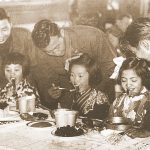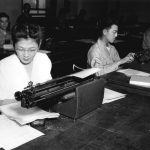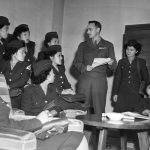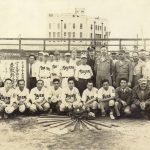Helping Japan Rebuild a New Society
After the war, thousands of MIS Nisei, along with new Army recruits and transfers, were assigned throughout Japan to use their knowledge of both languages and cultures to build a reciprocal relationship with Japan.
They served as liaisons between the U.S. military government and Japanese officials, interpreted at war crimes tribunals, monitored the press, helped draft Japan’s new constitution and land reform laws, monitored potential troublemakers, and sought out Communists among the Japanese public and the millions being repatriated from China and the Soviet Union.
Nisei soldiers helped to heal the wounds of wartime hatred and misunderstanding by providing food and teaching English and other Western customs such as baseball. Some Nisei married Japanese women and many stayed to work in Japan after the occupation formally ended in 1952.
By then, the Nisei had contributed to the postwar redevelopment of Japan.







